Are you ready to take your indoor gardening to the next level? In 2024, the world of gardening is undergoing a remarkable transformation, driven by sustainability and cutting-edge technology. From eco-friendly practices to smart gardening tools, the future of indoor gardening is set to revolutionize the way we nurture our plants.
But what are the trends that will shape the future of indoor gardening? How can you stay ahead of the curve and create a thriving indoor garden that’s both sustainable and technologically advanced? Let’s explore the exciting innovations and trends that are set to redefine the way we connect with nature and unleash our green thumbs.
Key Takeaways:
- The future of indoor gardening is focused on sustainability and technology
- Eco-friendly practices such as reducing water usage and using organic fertilizers are gaining popularity
- Technological advancements like smart gardening tools and automated watering systems make gardening more convenient and efficient
- Vertical gardening and rainwater harvesting are emerging trends in indoor gardening
- The integration of technology in gardening allows for real-time monitoring and data-driven decision-making
Sustainable Gardening Practices for a Greener Future
In 2024, gardening is evolving to prioritize eco-friendly practices that promote sustainability and minimize the carbon footprint. By adopting sustainable gardening practices, you can contribute to a greener future and make a positive impact on the environment. Here are some key practices to incorporate into your gardening routine:
1. Reduce Water Usage
A significant aspect of eco-friendly gardening is conserving water. By implementing water-saving techniques, you can decrease your water usage while still nourishing your plants. Consider the following strategies:
- Install drip irrigation systems to deliver water directly to the plant roots, minimizing water waste through evaporation.
- Collect and reuse rainwater through rain barrels or cisterns, reducing reliance on municipal water sources.
- Water plants during the early morning or late afternoon to prevent water loss due to evaporation during peak heat hours.
2. Use Organic Fertilizers
Incorporating organic fertilizers in your gardening practices not only nourishes your plants but also minimizes harmful chemicals in the ecosystem. Organic fertilizers, such as compost and natural plant-based materials, enrich the soil while promoting soil health and biodiversity.
3. Adopt Rainwater Harvesting Systems
Maximize the utilization of rainwater by implementing rainwater harvesting systems. These systems collect and store rainwater for later use in watering your garden. By utilizing this readily available natural resource, you can reduce strain on local water supplies and conserve water.
4. Embrace Vertical Gardening
Vertical gardening is a sustainable trend that maximizes space utilization and adds visual interest to your garden. By growing plants vertically using techniques like trellises, living walls, or hanging baskets, you can optimize limited space while improving air quality.
“Gardening is the art that uses flowers and plants as paint, and the soil and sky as a canvas.” – Elizabeth Murray
| Benefits of Sustainable Gardening Practices | Details |
|---|---|
| Environmental Impact | Promotes biodiversity, conserves water, and reduces the use of harmful chemicals that can harm the ecosystem. |
| Cost Savings | By conserving water and utilizing organic fertilizers, you can reduce your gardening expenses in the long run. |
| Healthy Soil | Sustainable practices improve soil health, enhancing plant growth and overall garden vitality. |
| Air Quality | Vertical gardening contributes to cleaner air by increasing the number of plants that can absorb carbon dioxide and release oxygen. |
By implementing these sustainable gardening practices, you can create a healthier and more environmentally friendly garden that benefits both you and the planet.
Embracing Technology in Gardening
Technology is revolutionizing gardening in 2024. With the advent of smart gardening tools and automated watering systems, gardening has become more convenient, efficient, and enjoyable. These technological advancements, coupled with real-time data on soil moisture, temperature, and light intensity, enable gardeners to make informed decisions and nurture their plants with precision.
Smart gardening tools are designed to provide accurate and up-to-date information about your garden’s environment. These tools monitor and analyze essential factors such as soil moisture, temperature, and light intensity, helping you understand the specific needs of your plants. With this data at your fingertips, you can adjust watering schedules, optimize lighting conditions, and provide the ideal growing environment for your plants.
Automated watering systems are another incredible technological advancement in gardening. By using sensors and timers, these systems ensure that your plants receive the right amount of water at the right time. This not only saves water but also promotes healthier plant growth, as it eliminates the guesswork and human error associated with manual watering.
The Benefits of Smart Gardening Tools and Automated Watering Systems
Smart gardening tools and automated watering systems offer several benefits for gardeners:
- Convenience: With real-time data and automated processes, gardening becomes more convenient and less time-consuming. You can easily monitor and control your garden’s environment from anywhere, using your smartphone or other devices.
- Efficiency: By optimizing watering schedules and lighting conditions based on accurate data, you can ensure that your plants receive the necessary resources for healthy growth. This maximizes efficiency and minimizes waste.
- Water conservation: Automated watering systems use sensors to detect soil moisture levels, preventing overwatering and reducing water waste. This environmentally friendly approach promotes responsible water usage in gardening.
- Healthy plant growth: By providing plants with the ideal growing conditions, smart gardening tools and automated watering systems promote optimal plant health and growth. This leads to stronger, more vibrant plants that are more resistant to pests and diseases.
“Technology is transforming gardening, making it more accessible and empowering for both experienced gardeners and beginners.”
Whether you are a seasoned gardener or a beginner, embracing technological advancements in gardening can greatly enhance your gardening experience. The combination of smart gardening tools and automated watering systems empowers you to create an optimal growing environment for your plants, leading to healthier, more beautiful gardens.
| Benefits of Technological Advancements in Gardening |
|---|
| Convenience |
| Efficiency |
| Water conservation |
| Healthy plant growth |
Indoor Gardening for Urban Living
Indoor gardening has become increasingly popular in 2024, especially in urban areas where outdoor space is limited. With the growing interest in bringing nature indoors, urban gardeners are exploring innovative methods to create green spaces within their homes. Two notable options for indoor gardening are vertical gardens and hydroponic systems.
Vertical gardens are a creative solution for maximizing limited space. These gardens utilize vertical wall spaces to grow plants vertically, creating an aesthetically pleasing display. It’s a great way to introduce greenery into small apartments or condos where floor space may be scarce.
Vertical gardens are not only visually striking but also provide numerous benefits. They improve indoor air quality, reduce stress, and enhance overall well-being. Plus, growing herbs or small vegetables can add a fresh touch to your culinary adventures.
Hydroponic systems, on the other hand, offer an alternative approach to traditional soil-based gardening. These systems allow plants to grow without soil, with their roots suspended in nutrient-rich water solutions. Hydroponics is a space-efficient method that promotes efficient water usage and faster plant growth.
Creating an indoor garden not only brings nature closer to you, but it also creates a refreshing and relaxing environment within your home. The presence of plants can reduce stress, enhance productivity, and improve the overall ambiance of your living space.
Benefits of Indoor Gardening:
- Improved indoor air quality
- Reduced stress and increased well-being
- Space optimization in small living areas
- Opportunity to grow fresh herbs and vegetables
- Enhanced aesthetics and ambiance
Whether you choose a vertical garden or a hydroponic system, the key is to find a method that suits your space and lifestyle. With the right tools and knowledge, anyone can create a thriving indoor garden, no matter how limited their urban dwelling may be.
Native Plants for Biodiversity and Cultural Significance
In 2024, there is a renewed interest in native plants. Native plants play a crucial role in enhancing biodiversity and promoting a sustainable environment. These plants are well-suited to local climates, requiring minimal maintenance and reducing the need for excessive watering or chemical intervention. By incorporating native plants into your garden, you contribute to the preservation of local ecosystems, providing a habitat for local wildlife.
Furthermore, native plants hold cultural and historical significance. Many Native American tribes have utilized these plants for centuries for their medicinal properties and spiritual rituals. By cultivating native plants in your garden, you not only create a visually appealing landscape but also contribute to the preservation of cultural heritage.
“Native plants are the key to restoring the balance of nature and ensuring the long-term health and vitality of our ecosystems.”
The Benefits of Native Plants:
- Promote biodiversity and support local ecosystems
- Require less water and maintenance due to their adaptability to local climates
- Attract native wildlife, such as butterflies, bees, and birds
- Preserve cultural heritage and traditional knowledge
- Provide habitat and food sources for endangered species
- Enhance soil health and prevent erosion
By incorporating native plants into your garden, you create a vibrant and sustainable space that not only benefits the environment but also connects you to the rich history and cultural significance of these plants.
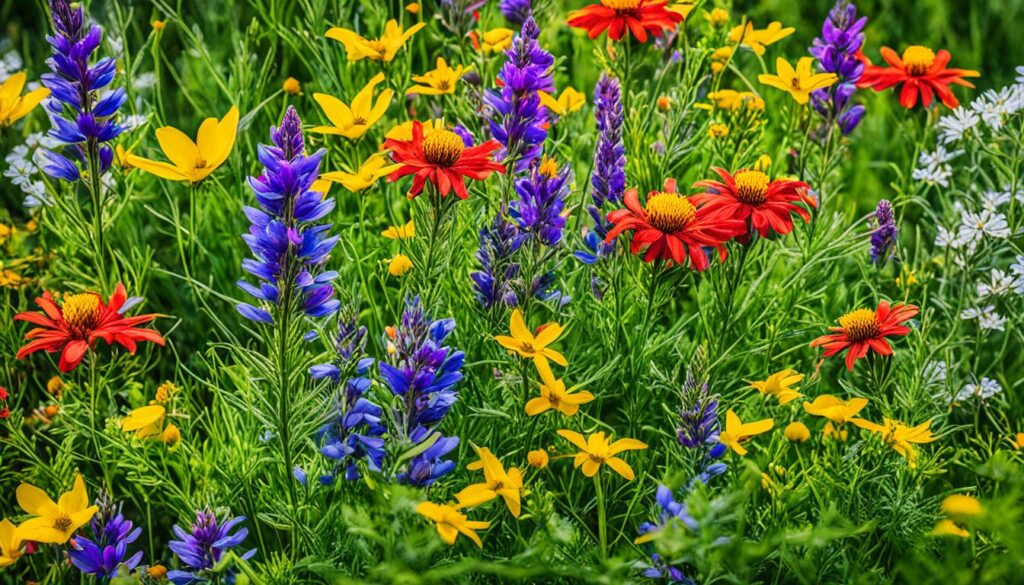
| Native Plant | USDA Hardiness Zone | Bloom Time |
|---|---|---|
| Black-Eyed Susan (Rudbeckia hirta) | Zone 3-9 | Summer |
| Blazing Star (Liatris spicata) | Zone 3-9 | Summer |
| Eastern Red Columbine (Aquilegia canadensis) | Zone 3-8 | Spring |
| Black Cherry Tree (Prunus serotina) | Zone 3-9 | Spring |
| Switchgrass (Panicum virgatum) | Zone 5-9 | Summer |
Edible Gardens for Self-Sufficiency and Sustainability
Growing your own food is a popular trend in 2024, with edible gardens gaining popularity. Whether you have a small plot or limited space, there are countless edible plants that can be grown at home, providing both nourishment and aesthetic appeal.
By cultivating edible gardens, you have the opportunity to control the quality of the food you consume. You can choose to grow organic, pesticide-free produce, ensuring that you and your loved ones are consuming fresh and healthy ingredients. Plus, the satisfaction of harvesting and enjoying the fruits of your labor adds an extra sense of fulfillment.
Edible gardens not only contribute to self-sufficiency but also promote sustainability. By reducing the reliance on store-bought produce, you minimize your carbon footprint and support the environment. Additionally, growing your own food reduces the need for excessive packaging and transportation, further reducing waste and emissions.
Benefits of Edible Gardens:
- Saving money: Growing your own food can help cut down on grocery expenses, as you eliminate the need to purchase certain fruits, vegetables, and herbs.
- Access to fresh and nutritious produce: Harvesting your own fruits and vegetables ensures that you’re consuming them at their peak freshness, enhancing their nutritional value.
- Enhancing biodiversity: By planting a variety of edible plants, you create a diverse ecosystem that attracts beneficial insects and other wildlife, contributing to overall garden health.
- Teaching opportunities: If you have children, involving them in the process of growing their own food can teach them valuable lessons about sustainability, responsibility, and the importance of healthy eating.
“The greatest fine art of the future will be the making of a comfortable living from a small piece of land.” – Abraham Lincoln
Regardless of your gardening experience or available space, there’s a wide range of edible plants you can consider growing. From herbs like basil and mint to salad greens like lettuce and spinach, and even fruits like tomatoes and strawberries, the options are endless. Start small with a few pots or dedicate a larger area in your backyard to create a diverse edible oasis.
Embrace the edible garden trend of 2024 and experience the joy of growing your own food. Not only will you indulge your taste buds with flavors straight from the garden, but you’ll also contribute to a more sustainable and self-sufficient future.
Over the next few sections, we’ll explore other gardening and farming trends that are shaping the future of sustainable agriculture. From embracing technology to cultivating native plants and designing vibrant outdoor spaces, the world of gardening is evolving in exciting ways. Stay tuned!
Minimalist Design for Tranquility and Easy Maintenance
In 2024, minimalist garden designs are gaining popularity for their simplicity and ease of maintenance. These gardens create a sense of tranquility and allow the natural beauty of the plants to shine. Minimalist gardens also require less maintenance, making them perfect for busy gardeners.
Benefits of Minimalist Garden Design
- Simplicity: Minimalist gardens embrace simplicity, focusing on clean lines and a limited color palette. This results in a visually pleasing and streamlined aesthetic.
- Tranquility: By minimizing visual clutter, minimalist gardens create a peaceful and serene atmosphere. They provide a place for relaxation and contemplation.
- Ease of Maintenance: With fewer plants and ornamental features, minimalist gardens require less pruning, watering, and overall upkeep. This makes them ideal for those with limited time or gardening experience.
- Space Optimization: The simplicity of minimalist design allows for efficient space utilization. Vertical gardening and strategic placement of plants maximize the available area.
Minimalist gardens offer a sanctuary from the chaos of everyday life. By incorporating clean lines, limited colors, and thoughtful plant selection, these gardens provide a serene retreat that requires minimal effort to maintain.
When designing a minimalist garden, start by selecting a small number of key plants that will serve as focal points. Choose plants with interesting textures, shapes, and foliage colors to create visual interest. Implement a monochromatic or limited color palette to maintain the simplicity of the design.
Incorporate natural materials such as stone, wood, and gravel to enhance the overall organic feel of the garden. Focus on creating clean lines and geometric shapes in the layout, using pathways and hedges to establish structure.
Sample Plant Selection for a Minimalist Garden
| Plant Type | Plant Name |
|---|---|
| Ornamental Grass | Festuca glauca |
| Shrubs | Buxus sempervirens |
| Perennial Flower | Lavandula angustifolia |
| Ground Cover | Thymus praecox |
| Tree | Acer palmatum |
By keeping the plant selection minimal and focusing on a few high-impact choices, the garden retains its minimalist aesthetic while still providing interest and variety.
In conclusion, minimalist garden design offers a simple and elegant way to create a tranquil outdoor space that is both visually appealing and easy to maintain. Whether you have a small urban rooftop or a sprawling backyard, embracing the principles of minimalism can transform your garden into a serene retreat.
Vibrant Colors for Striking Visual Displays
After years of muted tones, vibrant colors are making a comeback in garden design. Bold and vibrant garden colors create striking visual displays in 2024 gardens that are sure to catch your eye. From vibrant flower beds bursting with vivid hues to colorful planters and accessories that add pops of color throughout your outdoor space, expect to see a riot of color in gardens this year.
One way to incorporate bold and vibrant colors into your garden is by choosing flowers and plants with vibrant blooms. Consider planting varieties such as dahlias, zinnias, and sunflowers, which come in a wide range of bright and eye-catching colors. Incorporating foliage plants with striking hues, like coleus or croton, can also add visual interest and depth to your garden.
Another way to create stunning visual displays is by using colorful planters and accessories. Opt for planters in bold shades such as cobalt blue, fiery red, or sunny yellow. These vibrant containers will make a statement and provide a stunning backdrop for your plants. Add colorful accents like decorative stakes, wind chimes, or garden statues to enhance the visual appeal of your outdoor space.
To further enhance the visual impact of your garden, consider using color combinations that create contrast and harmony. For example, pairing complementary colors such as purple and yellow or orange and blue can create a vibrant and dynamic display. On the other hand, using analogous colors, such as different shades of pink or purple, can create a harmonious and soothing effect.
“A garden should be a feast for the senses, and vibrant colors play a key role in creating a visually stunning outdoor space.”
So, whether you prefer a vibrant and eclectic garden or a more focused color scheme, don’t hesitate to experiment with bold and vibrant garden colors. The use of striking visual displays in gardening adds excitement and personality to your outdoor space, making it a true haven of color and beauty.
| Garden Accessories | Plant Varieties |
|---|---|
| Colorful planters | Dahlias |
| Decorative stakes | Zinnias |
| Wind chimes | Sunflowers |
| Garden statues | Coleus |
Incorporating 2024’s Gardening Trends in Your Garden
To keep up with the gardening trends of 2024, it’s essential to infuse your garden with innovative ideas and sustainable practices. By incorporating these trends, you can create a vibrant and eco-friendly garden that adds beauty to your outdoor space. Here are some ideas to help you align your garden with the latest gardening trends:
- Native Plants: Embrace the biodiversity and sustainability of native plants by integrating them into your garden. Native plants are well-adapted to the local climate, requiring less water, fertilizer, and maintenance. They also provide habitats for local wildlife and contribute to a healthier ecosystem.
- Edible Gardens: Consider creating an edible garden to promote self-sufficiency and sustainability. Growing your own food allows you to consume fresh, organic produce, reducing the carbon footprint associated with food transportation. Plant herbs, vegetables, and fruits that thrive in your region, and enjoy the satisfaction of harvesting your own homegrown produce.
- Minimalist Design: Embrace the concept of simplicity and tranquility by incorporating minimalist design principles into your garden. Keep the layout clean and uncluttered, focusing on a few essential elements that make a statement. Utilize natural materials such as stone, wood, and bamboo to create a harmonious and peaceful outdoor space.
- Smart Gardening Tools: Take advantage of technological advancements in gardening by using smart gardening tools. These tools provide real-time data on soil conditions, weather forecasts, and plant health, enabling you to make informed decisions about watering, fertilizing, and pest control. Automate your gardening tasks with smart irrigation systems and robotic lawnmowers for a more efficient and convenient gardening experience.
By incorporating these gardening trends, you can create a sustainable and visually appealing garden that aligns with the latest practices and innovations. Enhance your outdoor space while making a positive impact on the environment.
“Gardening is the art that uses flowers and plants as paint, and the soil and sky as canvas.”
– Elizabeth Murray
Remember, each garden is unique, and you can customize these trends to suit your personal style and preferences. Whether you have a small balcony or a sprawling yard, there are creative ways to incorporate sustainability, technology, and beauty into your garden.
| Gardening Trend | Key Benefits |
|---|---|
| Native Plants |
|
| Edible Gardens |
|
| Minimalist Design |
|
| Smart Gardening Tools |
|
By incorporating these gardening trends and utilizing the benefits they offer, you can create a garden that is not only visually appealing but also sustainable and eco-friendly.
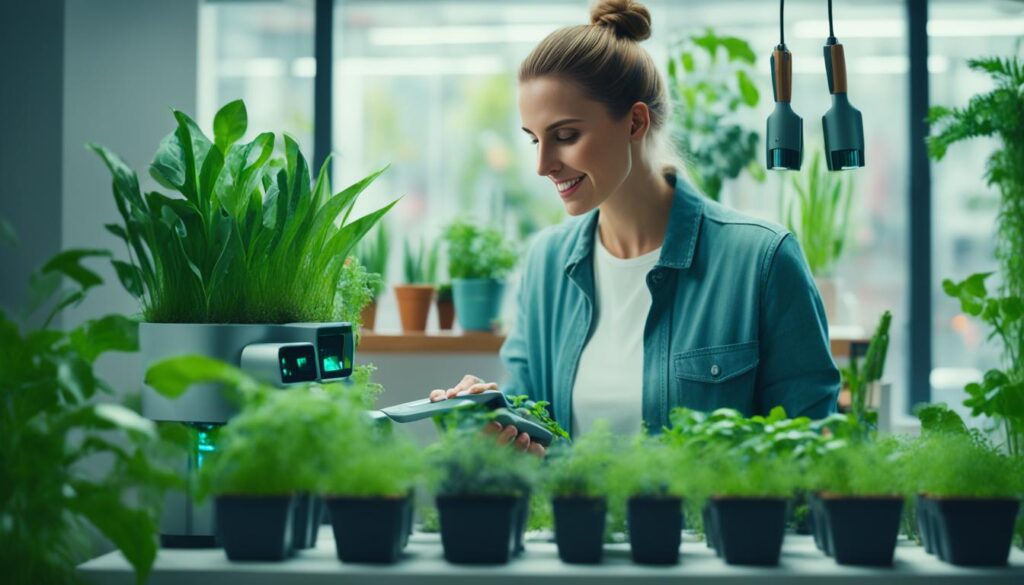
The Future of Indoor Farming Technology
Indoor farming technology is revolutionizing the field of agriculture in 2024. With advancements in vertical farming, LED lighting, Internet of Things (IoT), and automation, farmers can achieve efficient crop production and maximize limited space. Innovations in farming techniques such as hydroponics and aquaponics are paving the way for sustainable and water-efficient farming practices. Additionally, climate-responsive controlled environment agriculture ensures year-round crop production regardless of external factors.
| Farming Innovation | Description |
|---|---|
| Vertical Farming | Vertical farming allows for efficient space utilization by growing crops in vertically stacked layers. This technique maximizes crop yield while minimizing land usage. |
| LED Lighting | LED lighting advancements have significantly improved crop growth and energy efficiency. These lights emit specific wavelengths of light that promote photosynthesis and enhance plant development. |
| Internet of Things (IoT) | The integration of IoT in indoor farming enables real-time monitoring of environmental factors such as temperature, humidity, and nutrient levels. This data-driven approach optimizes farming practices and facilitates remote control and management. |
| Automation | Automated systems for watering, nutrient delivery, and pest control streamline farming operations. This reduces manual labor and improves precision agriculture, resulting in higher productivity and crop quality. |
| Hydroponics and Aquaponics | Water-efficient farming methods like hydroponics and aquaponics eliminate the need for soil and minimize water usage. Hydroponics involves growing plants in nutrient-rich water, while aquaponics combines fish and plant cultivation in a sustainable symbiotic system. |
| Controlled Environment Agriculture | Climate-responsive controlled environment agriculture utilizes advanced technologies to create optimal growing conditions. These controlled environments ensure consistent temperature, humidity, and lighting, allowing for year-round crop production. |
With indoor farming technology, farmers can overcome traditional limitations and achieve sustainable and high-yielding farming practices. The integration of innovative techniques and technology sets the stage for a future where agriculture is more efficient, environmentally friendly, and capable of meeting the growing demands for food production.
The Emerging Trends in Urban Farming
Urban farming is on the rise in 2024, as more and more people seek sustainable and innovative ways to grow food in urban areas. From vertical farming to soilless cultivation methods, urban farmers are embracing new techniques to optimize space usage, conserve water, and promote community well-being.
Vertical farming is a trending practice that involves growing crops in vertically stacked layers. This method maximizes space utilization by utilizing tall structures such as buildings or shipping containers. Vertical farming systems often incorporate advanced technologies such as LED lighting and automated irrigation, providing optimal growing conditions for plants.
Aeroponics is another soilless cultivation method gaining popularity in urban farming. It involves growing plants in a mist or air environment, with roots exposed to air and nutrients delivered through a fine mist. Aeroponics is highly efficient in terms of water usage and nutrient absorption, making it an ideal choice for urban farmers looking to conserve resources.
Hydroponics is a soilless cultivation method that has been widely used in urban farming for its simplicity and efficiency. Plants are grown in nutrient-rich water solutions, allowing them to directly access the nutrients they need for growth. Hydroponic systems can be set up indoors or outdoors, making them suitable for various urban environments.
Aquaponics is a unique farming method that combines aquaculture (raising fish) and hydroponics. In an aquaponic system, fish waste provides nutrients for plants, while the plants filter the water for the fish. This symbiotic relationship creates a closed-loop ecosystem where both plants and fish thrive. Aquaponics is highly efficient in water usage and nutrient recycling, making it a sustainable choice for urban farming.
The integration of IoT (Internet of Things) and automation is revolutionizing urban farming. Smart sensors and monitoring systems collect real-time data on environmental conditions such as temperature, humidity, and pH levels, allowing farmers to adjust conditions for optimal plant growth. Automated systems for irrigation, lighting, and nutrient delivery streamline farming operations and minimize manual labor.
Rooftop farming and community gardens are two ways urban farming is promoting sustainability and community well-being. Utilizing rooftops for farming not only maximizes space usage but also helps insulate buildings, reduce energy consumption, and mitigate the urban heat island effect. Community gardens provide a space for residents to come together, grow their own food, and connect with nature, fostering a sense of community and promoting mental well-being.
Benefits of Urban Farming
Urban farming offers numerous benefits that contribute to a greener and more sustainable future:
- Food security: Urban farming reduces dependence on distant food sources and creates local, resilient food systems.
- Sustainability: Soilless cultivation methods and efficient resource usage minimize water consumption, energy use, and carbon emissions.
- Community engagement: Rooftop gardens and community farms foster social connections, education, and a sense of shared responsibility.
- Improved food quality: Freshly harvested produce from urban farms is often more nutritious and free from pesticides.
- Green spaces: Urban farms bring greenery and biodiversity to urban environments, improving air quality and enhancing the aesthetic appeal of cities.
Embracing urban farming trends is not only a way to address food security and sustainability challenges but also an opportunity to create vibrant, healthy, and resilient communities.
| Trend | Description |
|---|---|
| Vertical Farming | Growing crops in vertically stacked layers to maximize space usage and optimize growing conditions. |
| Aeroponics | Growing plants in an mist or air environment with roots exposed to air and nutrients delivered through a fine mist. |
| Hydroponics | Growing plants in nutrient-rich water solutions, eliminating the need for soil. |
| Aquaponics | Combining aquaculture and hydroponics to create a symbiotic relationship between fish and plants. |
| IoT and Automation | Integration of smart sensors, monitoring systems, and automated controls for efficient farm management. |
| Rooftop Farming | Utilizing rooftop spaces for farming, maximizing space usage and promoting energy efficiency. |
| Community Gardens | Shared gardening spaces that foster community engagement, education, and sustainable food production. |
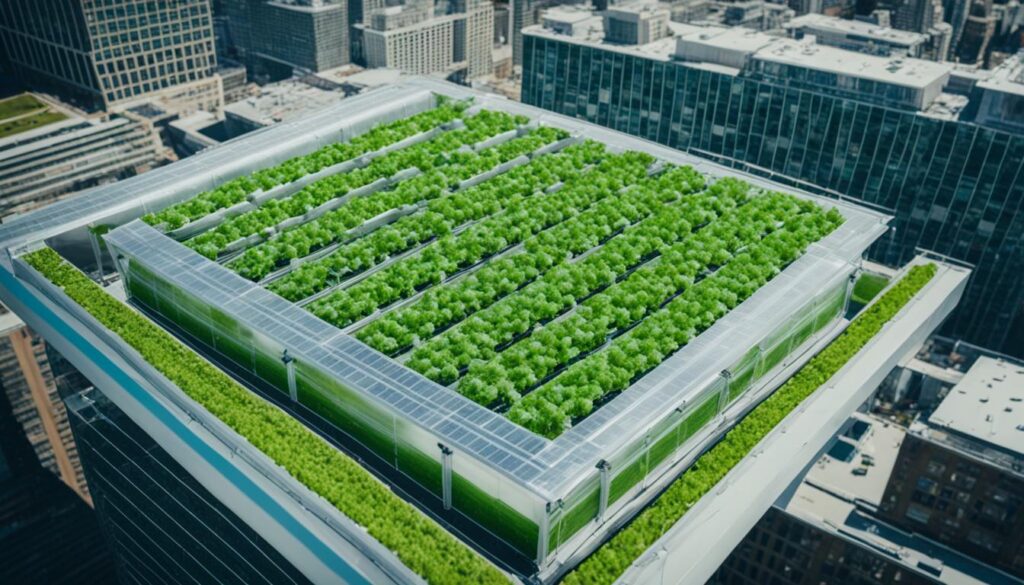
By embracing these emerging trends in urban farming, you can contribute to a more sustainable and food-secure future while enjoying the benefits of fresh, locally grown produce.
Conclusion
The future of gardening and farming in 2024 is marked by a strong emphasis on sustainability, technology, and urban agriculture. These trends are shaping the way we cultivate plants and produce food, paving the way for a greener and more efficient future.
One of the key focuses in gardening is the adoption of eco-friendly practices. These include reducing water usage, using organic fertilizers, and implementing rainwater harvesting systems. By embracing these practices, gardeners can minimize their carbon footprint and promote a more sustainable environment.
Technology plays a crucial role in the future of gardening. Smart gardening tools provide real-time data on soil moisture, temperature, and light intensity, allowing gardeners to make informed decisions. Automated watering systems save water and promote healthier plant growth. These advancements make gardening more convenient and efficient.
Urban agriculture is also on the rise in 2024. With limited outdoor space in urban areas, indoor gardening, vertical farming, and hydroponics offer innovative solutions. These methods maximize space utilization, conserve water, and ensure year-round crop production. The integration of IoT and automation further enhances precision agriculture.
In conclusion, the future of gardening and farming is bright and promising. By embracing sustainable practices, harnessing the power of technology, and exploring the potential of urban agriculture, we can create vibrant gardens and sustainable food production systems for a greener and more efficient future.
For more valuable Expert Tips check out our comprehensive Houseplant Guide to Tips for Indoor Plant Care.
If you happen to be nearby, stop in at The Landscape Connection and say Hi. Michelle and I would love to meet you.
FAQ
What are the trends for indoor plants in 2024?
In 2024, the trends for indoor plants revolve around sustainability and technology. Eco-friendly practices, such as reducing water usage and using organic fertilizers, are gaining popularity. Technological advancements, including smart gardening tools and automated watering systems, make indoor gardening more convenient and efficient. Other trends include rainwater harvesting and vertical gardening to maximize space utilization.
How can I make my garden more eco-friendly?
To make your garden more eco-friendly, you can adopt sustainable gardening practices. This includes reducing water usage by using techniques such as drip irrigation or collecting rainwater. Use organic fertilizers, like compost, instead of chemical-based ones. Plant native species that are well-suited to your local climate and require less maintenance. Additionally, consider implementing vertical gardening to optimize space and improve air quality.
What are smart gardening tools and how do they work?
Smart gardening tools are technologically advanced devices that provide real-time data on soil moisture, temperature, and light intensity. They allow gardeners to monitor and manage their plants more effectively. These tools often connect to smartphone apps, allowing you to receive notifications and adjust settings remotely. Some even have automated features, such as watering systems that adjust based on plant needs.
What are the benefits of indoor gardening in urban areas?
Indoor gardening is becoming popular in urban areas due to limited outdoor space. It allows you to create green spaces indoors, providing a refreshing and relaxing environment. Vertical gardens and hydroponic systems are particularly well-suited for urban living, as they maximize space utilization. Indoor gardening also allows you to grow your own food, promoting self-sufficiency and sustainability.
Why should I consider using native plants in my garden?
Using native plants in your garden has several benefits. Native plants are well-suited to the local climate and require less maintenance. They support local ecosystems by providing food and habitat for native wildlife. Native plants also have cultural and historical significance, as many have been used for medicinal purposes by Native American tribes. By using native plants, you can create a more sustainable and biodiverse garden.
What are the advantages of growing my own food?
Growing your own food is a popular trend in 2024 due to its numerous advantages. It allows you to have control over the quality and freshness of the food you consume. It promotes self-sufficiency, as you become less dependent on grocery stores. Growing your own food also helps reduce your carbon footprint and promotes sustainable agricultural practices.
What are the benefits of minimalist garden design?
Minimalist garden design is gaining popularity in 2024 due to its simplicity and ease of maintenance. These gardens create a sense of tranquility and allow the natural beauty of the plants to shine. By minimizing clutter and focusing on key elements, minimalist gardens require less maintenance and are perfect for busy gardeners who want to enjoy a beautiful outdoor space without excessive upkeep.
What role do vibrant colors play in garden design?
After years of muted tones, vibrant colors are making a comeback in garden design in 2024. Bright and eye-catching colors create striking visual displays and add a sense of energy and vibrancy to the garden. From vibrant flower beds to colorful planters and accessories, incorporating bold and vibrant colors can create a visually stunning and captivating outdoor space.
How can I incorporate the gardening trends of 2024 in my own garden?
To incorporate the gardening trends of 2024 in your garden, you can start by using eco-friendly practices such as reducing water usage and using organic fertilizers. Embrace technology by investing in smart gardening tools and automated watering systems. Consider creating indoor gardens or vertical gardens to make the most of limited space. Lastly, incorporate native plants, minimalist design principles, and vibrant colors to create a vibrant and sustainable garden.
How is indoor farming technology shaping the future of agriculture?
Indoor farming technology is revolutionizing agriculture in 2024. Vertical farming allows for efficient space utilization, while LED lighting advancements optimize crop growth. The integration of IoT and automation improves precision agriculture, enabling farmers to monitor and control their crops with precision. Water-efficient farming methods, such as hydroponics and aquaponics, conserve water and reduce environmental impact. Climate-responsive controlled environment agriculture ensures year-round crop production.
What are some emerging trends in urban farming?
Urban farming is experiencing a surge in popularity in 2024. Trends like vertical farming, aeroponics, hydroponics, and aquaponics are reshaping urban agriculture. These soilless cultivation methods optimize space usage, conserve water, and eliminate the need for traditional soil. Additionally, the integration of IoT and automation enhances precision agriculture, allowing urban farmers to maximize crop production in limited spaces. Rooftop farming and community gardens are also gaining traction, promoting sustainability and community well-being.
What can we expect for the future of gardening and farming?
The future of gardening and farming is set to become greener, more sustainable, and technologically advanced. With a focus on eco-friendly practices and innovative technologies, gardening and farming will continue to evolve in 2024 and beyond. From sustainable gardening practices to indoor farming technologies, there are exciting opportunities to create vibrant and sustainable gardens and ensure a reliable food supply for the future.


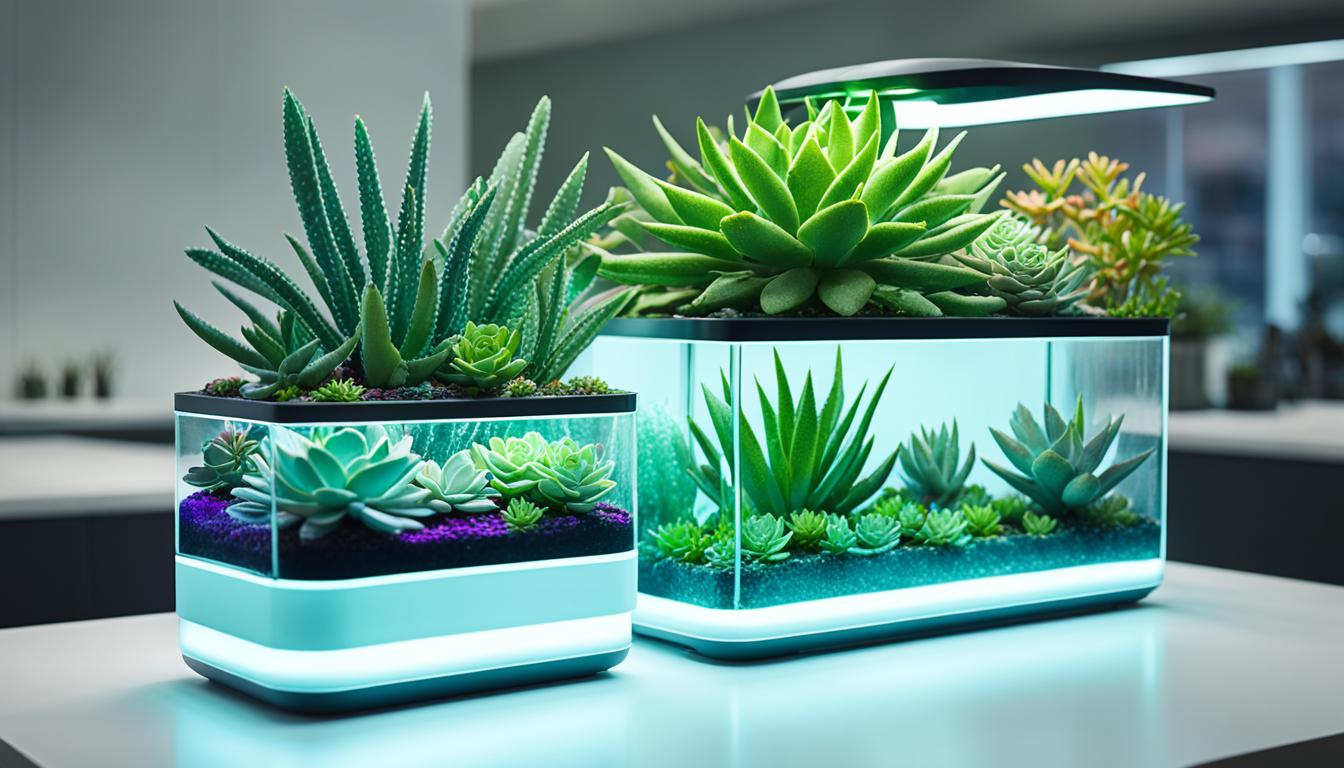
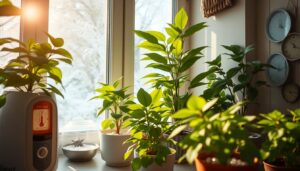
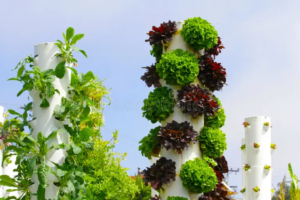
Pingback: The Ultimate Guide to Indoor Plant Care: 20 Essential Tips - Trusted House Plant Guide